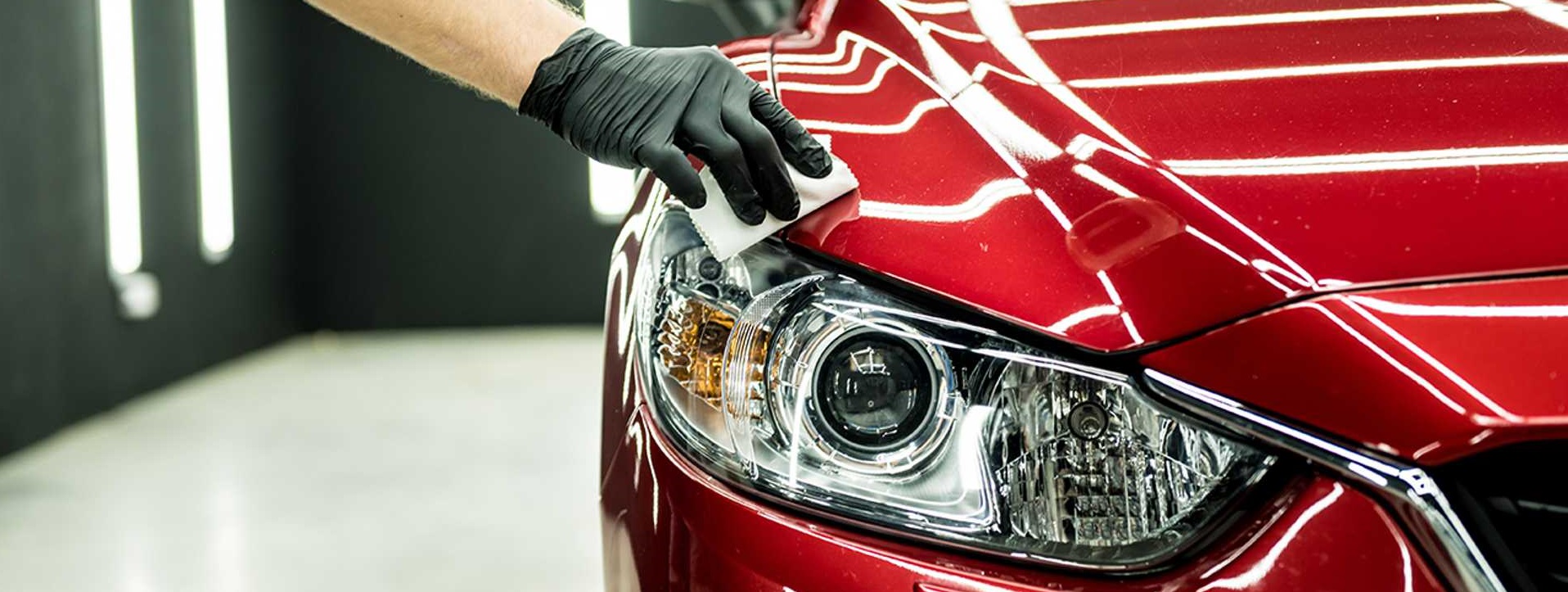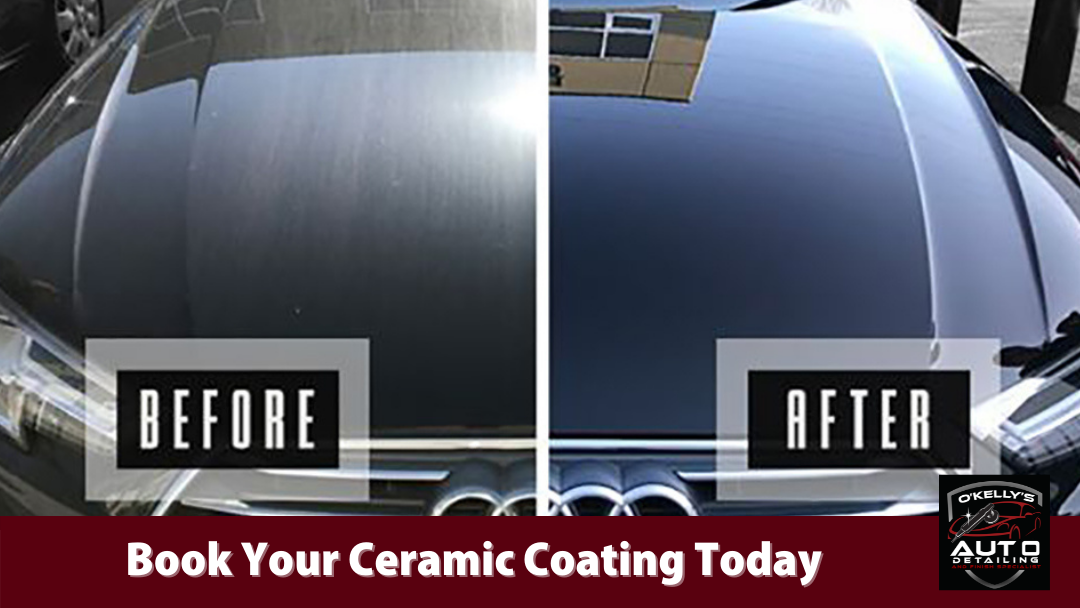Final Touch Auto Works Ceramic Coatings: Simplified Cleaning for Busy Professionals
Final Touch Auto Works Ceramic Coatings: Simplified Cleaning for Busy Professionals
Blog Article
The Ultimate Guide to Ceramic Coatings: Enhancing Your Automobile's End up and Durability
Ceramic coatings might be the service you've been browsing for if you're looking to raise your cars and truck's look and protection. These advanced coverings bond with your automobile's paint, developing a sturdy obstacle versus ecological damages. How do they stack up versus typical wax? Recognizing the advantages and application procedure can make a significant distinction in your car care regimen. Allow's discover what makes ceramic finishes a rewarding financial investment for your automobile.
What Are Ceramic Coatings?
Ceramic finishings are sophisticated protective layers that improve your automobile's outside. They're made from a fluid polymer that chemically bonds with your vehicle's paint, creating a resilient shield. Unlike traditional wax or sealants, which wear away in time, ceramic layers provide lasting defense against environmental pollutants like UV rays, dust, and chemicals.When you use a ceramic layer, you're purchasing a barrier that fends off water, making it simpler to cleanse your cars and truck and keeping it looking newer for longer. This modern technology assists preserve the honesty of your paint, minimizing the threat of scrapes and oxidation.Ceramic finishes been available in various solutions, each developed to deal with various requirements and preferences. You can select a DIY package or choose for expert application, depending on your convenience level and spending plan. Generally, ceramic finishings represent a sophisticated service for keeping your automobile's visual charm and long life.
Benefits of Ceramic Coatings
You expose an array of benefits that go beyond plain aesthetic appeals when you spend in a ceramic covering. To start with, it provides phenomenal defense against environmental contaminants like dust, bird droppings, and UV rays, keeping your vehicle's paint looking brand-new much longer. You'll observe that maintenance becomes simpler, as the hydrophobic properties trigger water and grime to slide off easily. This suggests less time spent cleaning and detailing your vehicle.Additionally, ceramic finishes can boost the gloss of your cars and truck's surface, giving it that display room shine. They additionally offer resistance to scrapes and swirl marks, which helps maintain your lorry's resale value. With a ceramic finishing, you're not simply protecting your investment; you're likewise boosting its general look and longevity. Inevitably, this innovative technology assurances your automobile sticks out while appreciating lasting advantages that typical waxes simply can not match.
The Application Process: Exactly How to Apply Ceramic Coatings
Applying a ceramic covering involves several vital actions to guarantee suitable outcomes. Initially, completely wash your vehicle to remove any kind of dust, crud, or contaminants. This ensures the surface area is clean and ready for the finishing. Next, decontaminate the paint using a clay bar to remove embedded particles. Later, evaluate the paint for flaws and polish it to achieve a smooth surface.Once your car's surface area is prepped, use the ceramic layer in tiny areas. Utilize an applicator pad to spread the layer equally, following the manufacturer's guidelines. Enable the covering to heal for the suggested time, usually in between one to 2 hours, depending on the product.Finally, avoid cleaning your cars and truck for at least a week to let the coating bond effectively. Adhering to these steps will certainly help you achieve a sturdy, high-gloss surface that safeguards your car for several years to find.

Comparing Ceramic Coatings to Standard Wax
After ensuring your car's surface is flawlessly prepped with a ceramic finishing, it's time to ponder how this contemporary option stacks up against standard wax. Ceramic layers provide a robust layer of security that lasts for several years, while wax typically provides just a couple of weeks of sparkle. You'll notice that ceramic finishings bond with your paint, producing a hydrophobic surface area that repels water and dust, making maintenance easier.In contrast, conventional wax sits on top of the paint and needs regular reapplication. With ceramic layers, you obtain premium scrape resistance and UV defense, aiding to stop fading and oxidation. While the initial investment for a ceramic finishing is higher, the long-lasting benefits typically exceed the expenses. So, if you're seeking longevity and boosted gloss, ceramic coatings are a smart choice over conventional wax.
Upkeep Tips for Your Ceramic Layered Vehicle
To maintain your ceramic-coated vehicle looking beautiful, regular maintenance is important. Start with a gentle wash making use of a pH-balanced hair shampoo; stay clear of harsh detergents that can deteriorate the layer. Make use of a microfiber clean glove to avoid scratches and always rinse extensively to get rid of any soap residue.After washing, dry your cars and truck with a soft microfiber towel to stay clear of water places. Take into consideration using a ceramic upkeep spray every couple of months to boost the covering's hydrophobic properties and add an additional layer of protection.It's likewise a good idea to avoid automated automobile cleans with unpleasant brushes, as they can harm the coating. Instead, opt for hand cleans or touchless clean alternatives. Additionally, frequently examine your vehicle for contaminants like tree sap or bird droppings and address them quickly to stop etching. Complying with these tips will assist keep the luster and resilience of your ceramic-coated automobile for years to find.
Usual Myths Regarding Ceramic Coatings
Despite the outstanding advantages of ceramic finishings, several misconceptions can produce complication for car owners. One usual mistaken belief is that ceramic coatings get rid of the demand for maintenance. While they do provide boosted defense, regular cleaning and treatment are still important to preserve that high-gloss finish.Another misconception is that these coatings are scratch-proof. While they supply a strong layer of defense versus minor scrapes, they can't hold up against extreme effects or rough materials.Many additionally believe that ceramic finishes will make their cars and trucks immune to all impurities. Actually, they push back dust and water but won't prevent issues like bird droppings or tree sap from triggering damages if left unattended.Lastly, some believe that applying ceramic finishings is a do it yourself task any individual can manage, yet attaining a remarkable application usually requires professional knowledge to ensure peak outcomes.
Selecting the Right Ceramic Finish for Your Cars and truck
Exactly how do you select the best ceramic finishing for your cars and truck? Beginning by thinking about the degree of security you need. If your car encounters harsh weather or frequent roadway trips, go with a premium finishing that offers premium toughness and resistance to scratches, UV rays, and chemical stains.Next, consider the application method. Some layers need professional installment, while others are DIY-friendly. If you're experienced, a DIY product may save you cash, but for the most effective results, an expert can guarantee appropriate application.Don' t forget to inspect the longevity of the look at more info finish. Some last a few years, while others can secure for a years or more. Read reviews and testimonies to assess customer satisfaction. By considering these aspects, you'll find a ceramic layer that not just boosts your vehicle's look however additionally gives resilient defense.
Frequently Asked Questions
How Much Time Do Ceramic Coatings Last typically?
Ceramic finishings generally last anywhere from two to 5 years, depending on factors like application, upkeep, and ecological problems. You'll intend to adhere to correct treatment regimens to optimize their longevity and efficiency.
Can Ceramic Coatings Be Applied Over Paint Scratches?
You can't apply ceramic finishings over paint scratches properly. It's finest to repair any type of scrapes first, ensuring a smooth surface area - Final Touch Auto Works Ceramic Coatings. By doing this, the coating bonds appropriately and supplies ideal defense for your lorry's coating
Are Ceramic Coatings Safe for All Auto Surface areas?
Ceramic finishes are generally risk-free for the majority of car surface areas, consisting of paint, glass, and wheels. Nevertheless, it is important to inspect details product guidelines, as some finishings may not appropriate for sure materials or surfaces.

Will Ceramic Coatings Protect Versus UV Damage?

Can I Do Touch-Ups on Ceramic Coated Surface Areas?
You can do touch-ups on ceramic coated surfaces, yet it's essential to make use of compatible items. Verify the area is navigate here tidy and follow correct application techniques to preserve the coating's honesty and performance. Unlike standard wax or sealers, which wear off over time, ceramic layers offer resilient protection versus environmental impurities like UV rays, dirt, and chemicals.When you use a ceramic covering, you're spending in a barrier that repels water, making it less complicated to clean your auto and keeping it looking more recent for longer (Final Touch Auto Works Ceramic Coatings). Later, check the paint for imperfections and brighten it to accomplish a smooth surface.Once your car's surface area is prepped, apply the ceramic covering in tiny sections. Enable the coating to treat for the advised time, generally in between one to 2 hours, depending read this on the product.Finally, prevent washing your cars and truck for at least a week to let the layer bond correctly. Take into consideration using a ceramic maintenance spray every couple of months to boost the coating's hydrophobic buildings and include an extra layer of protection.It's also smart to avoid automated auto cleans with unpleasant brushes, as they can harm the coating. Ceramic coverings are generally safe for the majority of vehicle surfaces, including paint, glass, and wheels
Report this page